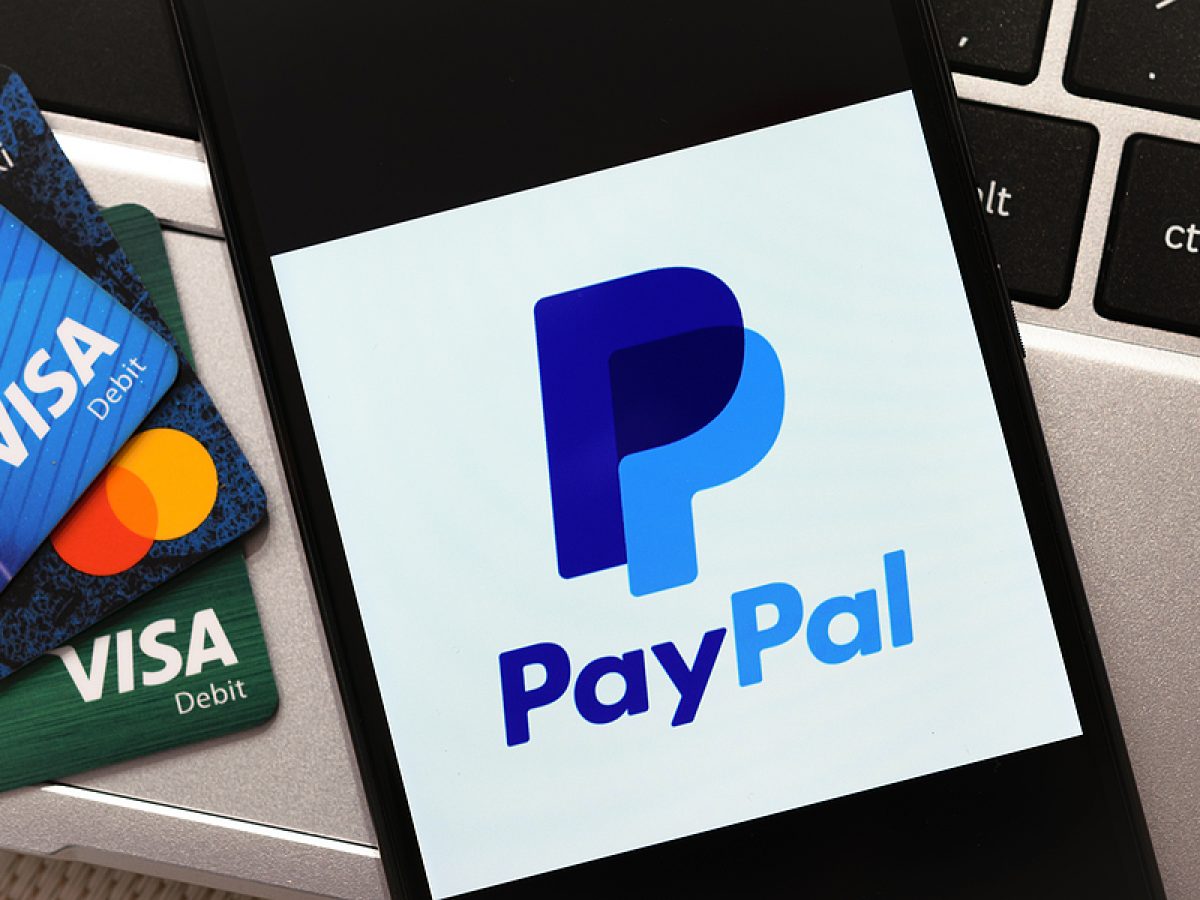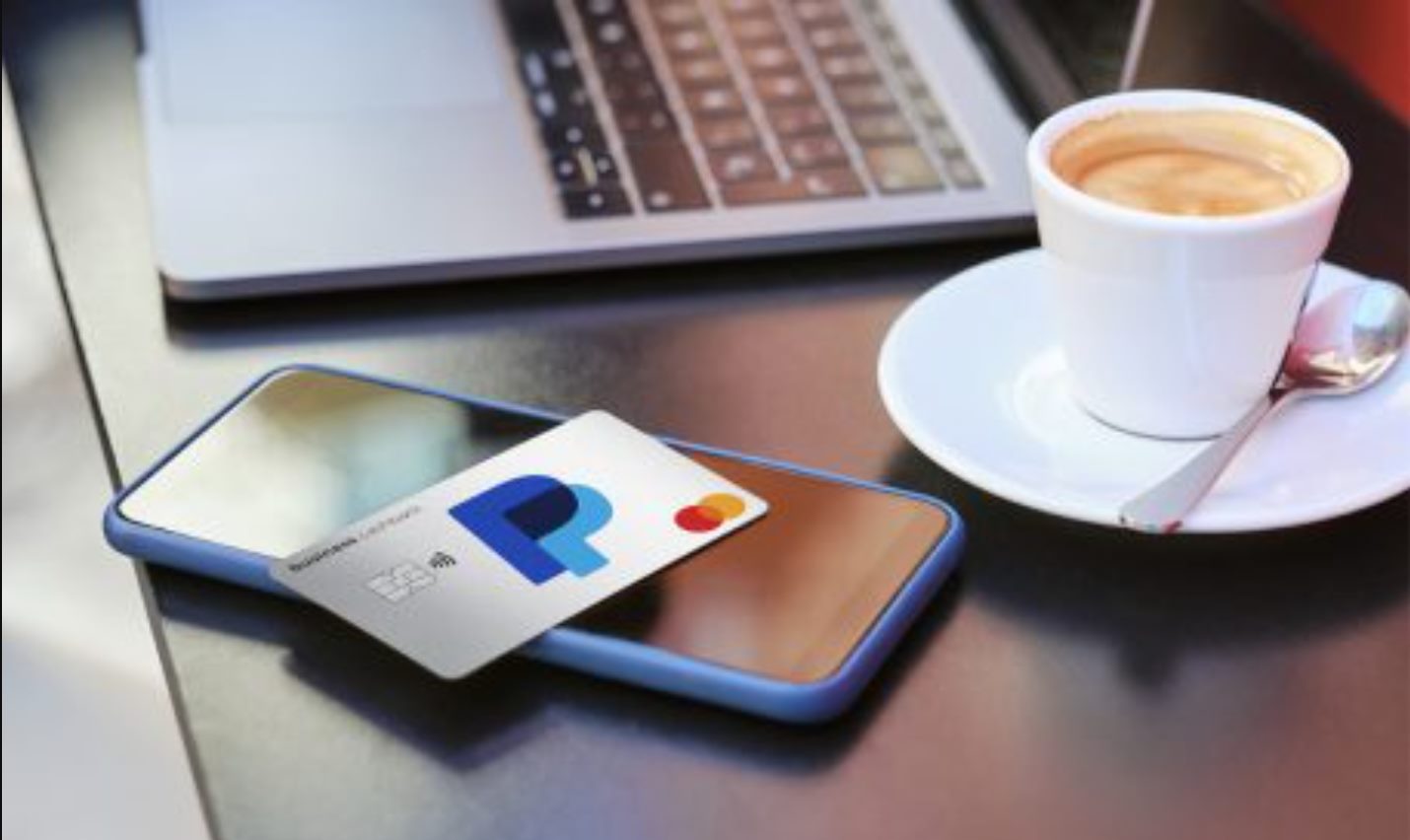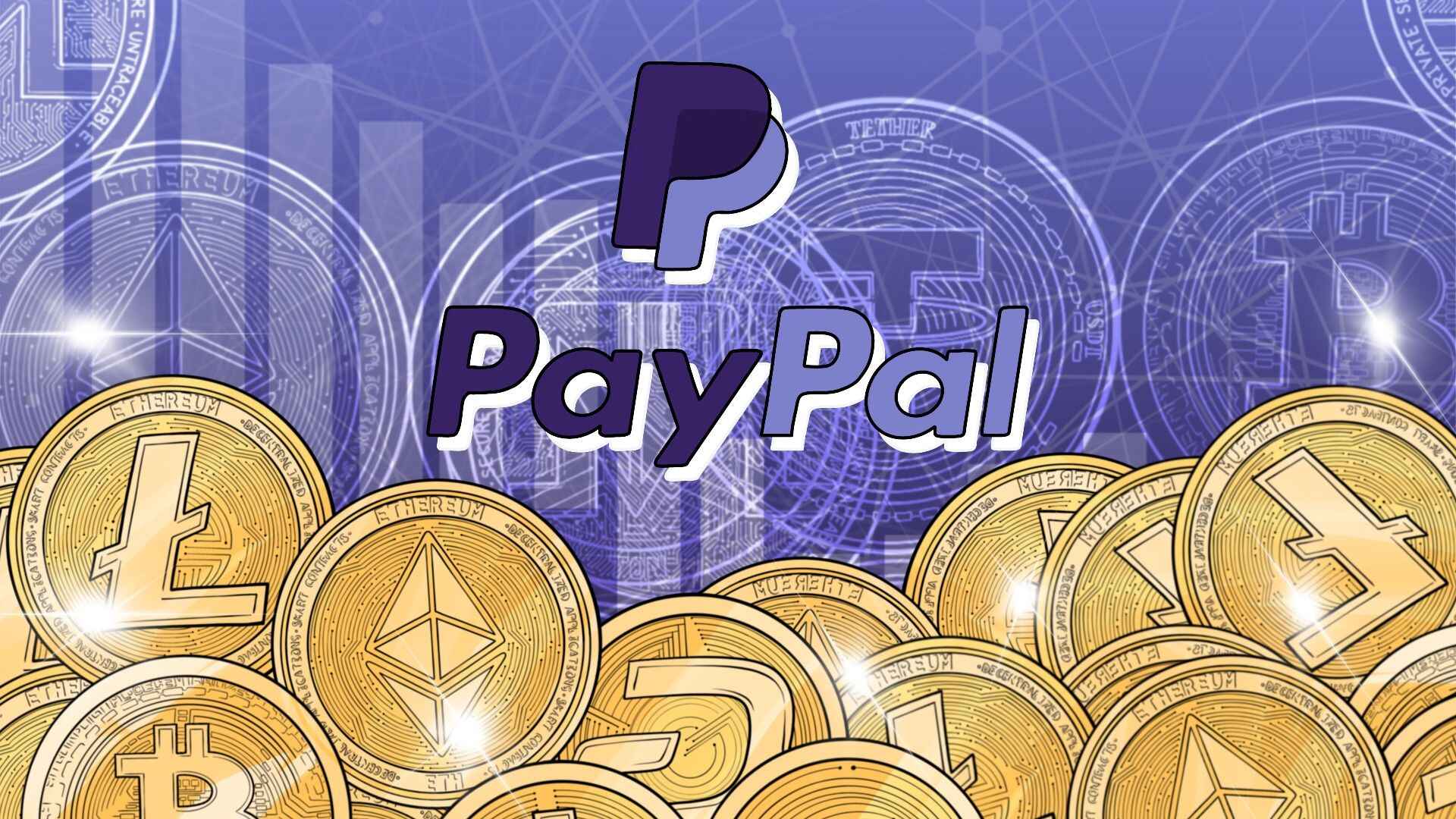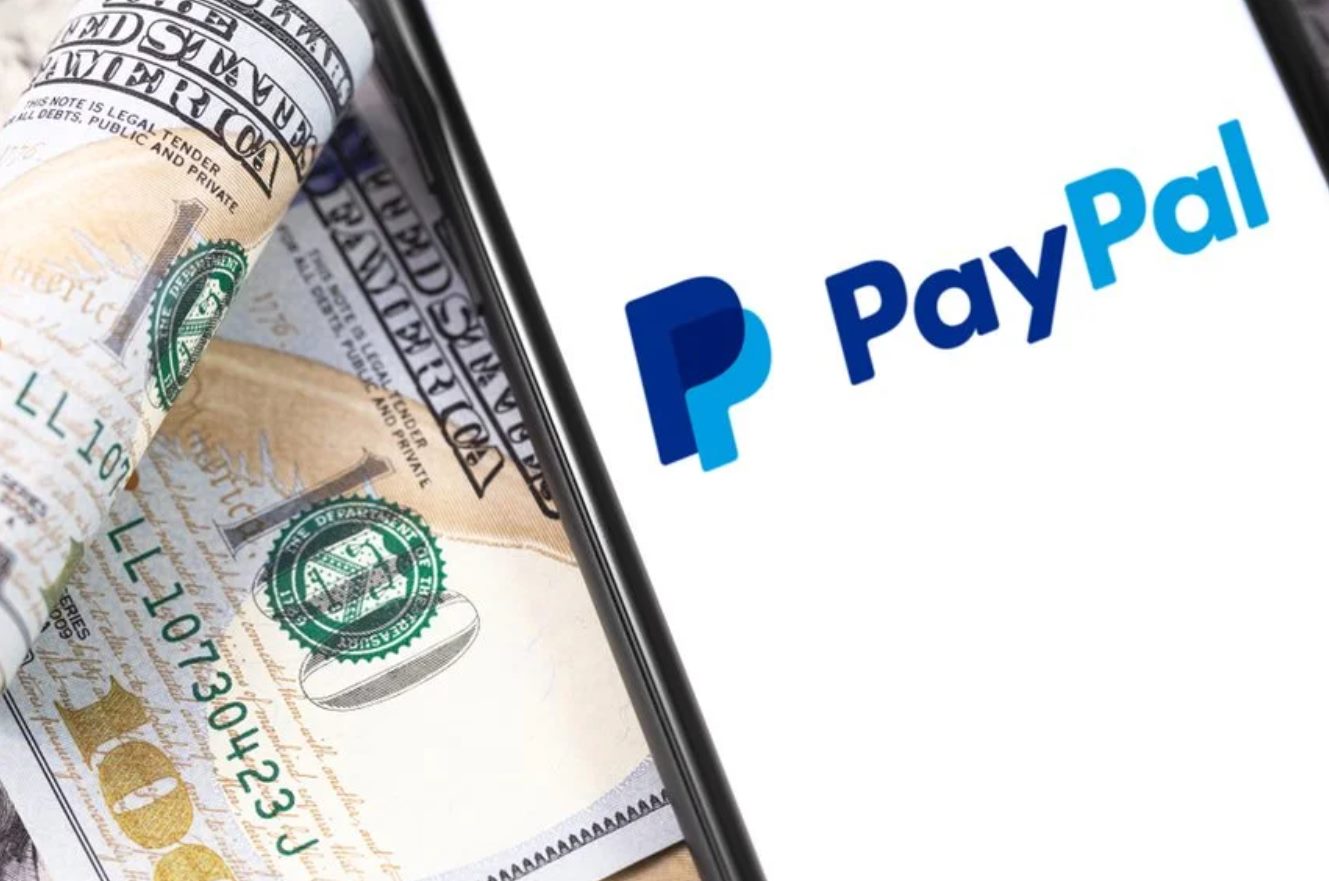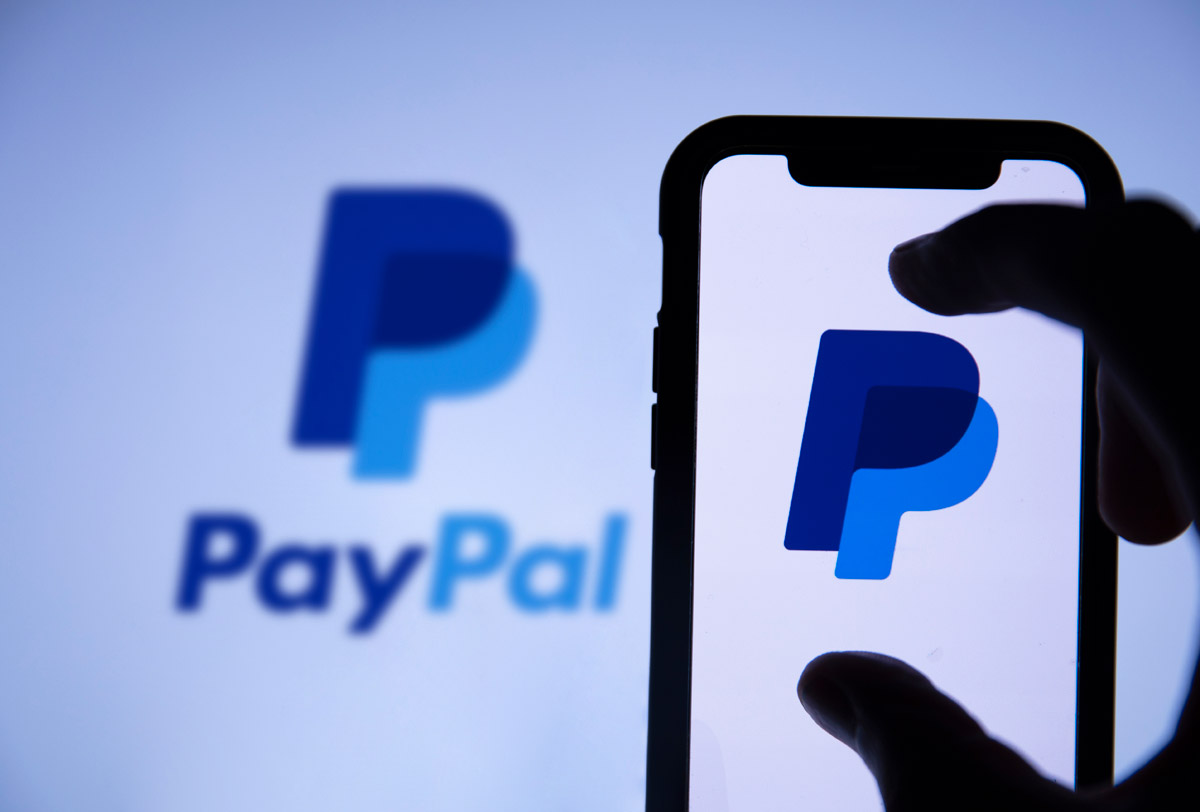Introduction
Welcome to the world of online selling! Selling products or services online has become increasingly popular, and PayPal has emerged as one of the most trusted and widely-used payment processors for e-commerce transactions. Whether you’re a small business owner or an individual looking to sell items, PayPal provides a secure and convenient platform to accept payments from customers worldwide.
In this guide, we’ll walk you through the process of setting up a PayPal account, linking your bank account or credit card, and understanding PayPal fees. We’ll also provide step-by-step instructions on creating money requests or invoices, adding payment buttons to your website or online store, and accepting PayPal payments on eBay. Additionally, we’ll discuss how to handle PayPal disputes and claims, as well as withdrawing funds from your PayPal account.
Selling on PayPal offers several benefits. Firstly, it allows you to reach a global customer base, opening up new markets for your products or services. PayPal’s secure payment system provides peace of mind to both sellers and buyers, minimizing the risk of fraudulent transactions. The easy integration of PayPal into various e-commerce platforms and the ability to add payment buttons to your website make it a versatile tool for online selling.
Furthermore, PayPal’s user-friendly interface and comprehensive reporting tools enable you to track your sales, manage inventory, and analyze customer purchasing patterns. With the ability to accept multiple currencies, PayPal simplifies international transactions, allowing you to target a broader audience.
Whether you’re selling handmade crafts, digital downloads, or offering professional services, PayPal offers the flexibility and security you need to make your online business thrive. By following the steps outlined in this guide and utilizing the tips for successful selling on PayPal, you’ll be well on your way to becoming a successful online seller.
Setting Up a PayPal Account
To start selling on PayPal, the first step is to create a PayPal account. Visit the PayPal website and click on the “Sign Up” button. You’ll be presented with two options: “Business Account” or “Personal Account.” Choose the account type that best suits your selling needs.
Next, you’ll need to provide some basic information, including your email address and a strong password to secure your account. Make sure to choose a password that is unique and not easily guessable.
After entering your personal information, you’ll be asked to link your bank account or credit card to your PayPal account. This step allows PayPal to withdraw funds from your account when you make a sale and deposit them into your bank account. It also enables you to make purchases using your PayPal balance or linked credit card.
Linking your bank account or credit card is a straightforward process. Follow the prompts on the PayPal website or app, enter the required information, and PayPal will securely verify your account details.
Once your account is linked and verified, you’ll have the option to enable additional features, such as PayPal Seller Protection and PayPal Checkout integration. These features can provide added security and convenience for both you and your customers during the selling process.
It’s important to note that PayPal may require additional verification steps, such as confirming your identity or providing proof of address, depending on your country and the type of account you’re setting up. Follow the instructions provided by PayPal to complete these verification processes.
After successfully setting up your PayPal account, take the time to familiarize yourself with the account settings and options available to you. Customize your profile, including your business name and logo if applicable, to create a professional and branded appearance for your customers.
Remember to keep your account information, such as your password and security questions, secure and updated regularly. PayPal provides various security features, such as two-factor authentication and notifications for suspicious account activity, to help protect your account from unauthorized access.
In the next section, we’ll delve into how to link your bank account or credit card to your PayPal account and verify it to start selling.
Linking a Bank Account or Credit Card
To fully utilize the selling capabilities of your PayPal account, you’ll need to link a bank account or credit card. This allows you to receive funds when you make a sale and make purchases using your PayPal balance or linked card.
To link a bank account, log in to your PayPal account and navigate to the “Wallet” tab. Click on “Link a bank account” and enter your bank account details, including the account number and routing number. PayPal may require you to confirm the ownership of the bank account by making a small deposit and requesting you to verify the deposited amount.
If you prefer to link a credit card, go to the “Wallet” tab and select “Link a card.” Enter the required information, such as the card number, expiration date, and CVV code. PayPal will validate the card by charging a small amount and asking you to confirm the transaction by entering the exact amount charged.
Linking your bank account or credit card to your PayPal account adds an extra layer of security and convenience. It allows you to make purchases without sharing your financial information with sellers. Additionally, when someone makes a payment to your PayPal account, the funds will be transferred directly to your linked bank account or reflected in your PayPal balance.
If you encounter any issues or have questions during the process of linking your bank account or credit card, PayPal offers customer support to assist you. Their support team can help troubleshoot any problems and guide you through the necessary steps to successfully link your account or card.
Once your bank account or credit card is linked and verified, you’ll have access to the full array of features and services that PayPal provides for sellers. You can confidently accept payments from customers and manage your finances seamlessly through your PayPal account.
In the next section, we’ll explore how to verify your PayPal account, an essential step in ensuring the security and trustworthiness of your online selling activities.
Verifying Your PayPal Account
Verifying your PayPal account is an important step in establishing trust and credibility as an online seller. It also unlocks additional features and benefits that can enhance your selling experience.
To verify your PayPal account, log in to your account and navigate to the “Settings” or “Profile” section. Look for the option to “Verify” your account, which may be located under the “Account Information” or “Financial Information” tab.
PayPal offers different methods of verification, depending on your country and the information you provided during the account setup process. The most common verification method involves confirming your identity and address.
Typically, you’ll be required to provide supporting documentation such as a valid government-issued identification document (e.g., passport or driver’s license) and a proof of address (e.g., utility bill or bank statement). PayPal will guide you through the necessary steps to upload or submit these documents securely.
Once your documentation is reviewed and approved by PayPal, your account will be marked as verified. This verification process helps to ensure the legitimacy of your identity and build trust with potential buyers.
Verifying your PayPal account not only enhances security and trust but also grants you access to additional features. For example, verified accounts are eligible for PayPal Seller Protection, which provides coverage against unauthorized transactions, item not received claims, and chargebacks.
With a verified account, you can also enjoy higher transaction limits and expand your selling capabilities. Verified sellers often have increased buyer confidence, as the verification process confirms your identity and makes your business appear more legitimate.
If you encounter any issues during the verification process or have questions, PayPal’s customer support team is available to assist you. They can provide guidance and help resolve any concerns or inquiries you may have.
Remember to keep your account information, including your verification documents, up to date. If there are any changes, such as a new address or updated identification, ensure that you update your account accordingly to maintain a verified status.
Once your PayPal account is verified, you are now ready to start selling with confidence. In the next section, we’ll dive into understanding PayPal fees and how they may impact your selling transactions.
Understanding PayPal Fees
When selling on PayPal, it’s important to understand the fees associated with your transactions. PayPal charges fees based on the type of transaction, the currency used, and the location of the buyer and seller. Familiarizing yourself with these fees will help you accurately calculate your costs and determine your pricing strategy.
The main fees you may encounter as a seller on PayPal include:
Transaction Fees: PayPal charges a fee for each transaction you receive. The fee amount varies depending on factors such as your transaction volume, the buyer’s location, and the type of account you have. Make sure to review PayPal’s fee structure, which can be found on their website, to understand the specific charges applicable to your sales.
Currency Conversion Fees: If you receive payments in a currency different from your primary currency, PayPal will apply a currency conversion fee. This fee is based on the current exchange rate and can impact the total amount you receive after conversion.
International Transaction Fees: If you sell to buyers located outside your country, PayPal may apply additional fees for international transactions. These fees are usually a percentage of the transaction amount and can vary depending on the countries involved.
In addition to these fees, PayPal may also impose charges for certain optional services or features, such as PayPal Seller Protection or advanced integrations with e-commerce platforms.
It’s essential to consider these fees when setting your selling prices and determining your profit margins. Take into account any applicable transaction fees, currency conversion fees, and international transaction fees to ensure you’re pricing your products or services competitively while covering your costs.
To understand the specific fees applicable to your account, log in to your PayPal account and navigate to the “Fees” or “Transaction Fees” section. PayPal provides detailed breakdowns of fees applied to your transactions, allowing you to track and analyze your selling costs.
It’s also worth mentioning that PayPal’s fee structure may change over time, so it’s a good practice to periodically review the latest fee information provided by PayPal to ensure you have the most up-to-date understanding of their charges.
By being aware of the fees associated with selling on PayPal, you can make informed decisions and properly account for these costs when managing your online business. In the next section, we’ll explore how to create PayPal money requests or invoices, providing a professional and streamlined way to request payments from your customers.
Creating a PayPal Money Request or Invoice
One of the key features of PayPal is the ability to create money requests or invoices, making it easy for you to request payment from your customers. Whether you’re selling products, offering services, or simply collecting payments, PayPal offers a convenient and professional way to send payment requests.
To create a PayPal money request or invoice, log in to your PayPal account and navigate to the “Request Money” or “Invoicing” section. Here, you’ll find options to customize and send your payment requests.
Money Request: If you need to request a specific amount from a customer, select the “Request Money” option. Enter the email address or mobile number of the person you’re requesting payment from, specify the amount, and choose the currency. You can also include a personalized message to provide additional details or instructions. Once submitted, PayPal will send a notification to the recipient with your request, and they can simply click the link to proceed with the payment.
Invoice: If you prefer a more detailed and structured way to request payment, you can create and send an invoice. PayPal’s invoicing feature allows you to customize the invoice with your business logo, itemized descriptions, quantities, prices, and taxes if applicable. You can even apply discounts or add shipping charges. Once you’ve created the invoice, you can send it directly to your customer’s email address. They can then view the invoice, review the details, and pay directly through PayPal with just a few clicks.
Both money requests and invoices provide a professional and secure way to request payment from your customers. PayPal tracks the status of your requests and invoices, providing an organized overview of your pending and paid transactions. This feature can be especially helpful when managing multiple orders or clients.
In addition to creating standalone money requests or invoices, PayPal also offers integration with various e-commerce platforms and shopping carts. This allows you to seamlessly generate payment requests or invoices from your website or online store, streamlining the checkout process for your customers and automating the transactional process for your business.
Take advantage of the customization options available when creating money requests or invoices. Personalize your requests with a friendly tone and provide all the necessary information, such as order details, payment due dates, and any applicable terms and conditions. Clear communication ensures a smooth payment process and helps build trust with your customers.
By utilizing PayPal’s money requests and invoicing features, you can simplify the payment collection process, enhance professionalism, and increase the efficiency of your online selling operations. In the next section, we’ll explore how to add payment buttons to your website or online store, providing a seamless checkout experience for your customers.
Adding Payment Buttons to Your Website or Online Store
Integrating PayPal payment buttons into your website or online store is a critical step in providing a seamless checkout experience for your customers. By adding these buttons, you allow customers to easily make payments using their PayPal account or credit card, increasing the likelihood of completing a purchase.
To add PayPal payment buttons to your website or online store, you have several options:
PayPal Buttons: PayPal provides a range of pre-designed buttons that you can generate through your PayPal account. These buttons can be easily customized to fit your website’s design and branding. Simply select the button type (such as “Buy Now” or “Add to Cart”), specify product details, and PayPal will generate the HTML code that you can copy and paste into your website’s code.
PayPal Checkout: PayPal Checkout provides a streamlined and mobile-optimized checkout experience. With just a few lines of code, you can integrate PayPal Checkout into your website or online store. This enables customers to pay using their PayPal account or credit card without ever leaving your site. PayPal Checkout also offers built-in fraud protection and security features, giving you and your customers peace of mind.
E-commerce Platforms and Plugins: If you’re using an e-commerce platform or content management system (CMS) for your website, chances are there are PayPal integration plugins or built-in features available. Platforms like WooCommerce, Shopify, and Magento often offer easy-to-use plugins that allow you to add PayPal payment buttons or enable PayPal as a payment option during the checkout process. These plugins simplify the integration process and provide a seamless experience for both you and your customers.
When adding PayPal payment buttons to your website or online store, it’s essential to strategically place them in prominent locations, such as product pages or the shopping cart. Make sure the buttons are clearly visible and easily accessible throughout the purchasing journey to encourage customers to complete their transactions.
Regularly test the payment buttons to ensure they are functioning correctly. Make a few test purchases to verify that payments are properly processed and that customers receive confirmation emails or order notifications.
Remember to keep track of your sales and monitor the performance of your payment buttons. PayPal provides reporting and analytics tools that allow you to track transactions, analyze sales trends, and gain insights into customer behavior. Utilize these tools to optimize your selling strategy and make data-driven decisions.
By seamlessly integrating PayPal payment buttons into your website or online store, you provide your customers with a convenient and secure payment method, increasing the likelihood of completing a sale. In the next section, we’ll explore how to accept PayPal payments on eBay, one of the most popular online marketplaces for sellers.
Accepting PayPal Payments on eBay
When selling on eBay, accepting PayPal payments is a common and convenient way to receive funds from your buyers. PayPal is seamlessly integrated into the eBay platform, making it easy for both buyers and sellers to complete transactions securely and efficiently.
To accept PayPal payments on eBay, you’ll need to link your PayPal account to your eBay account. This ensures that when a buyer makes a purchase, the funds are transferred directly to your PayPal account.
Setting up PayPal as your preferred payment method on eBay is straightforward. Simply navigate to your eBay account settings, locate the payment preferences section, and select PayPal as your preferred option.
Once your PayPal account is linked, eBay will automatically direct buyers to pay through PayPal when they make a purchase. This gives buyers the confidence of using a familiar, trusted, and secure payment method.
When a buyer successfully completes payment through PayPal, you’ll receive a notification from eBay and PayPal, and the funds will be immediately available in your PayPal account. You can then choose to keep the funds in your PayPal account for future purchases or transfer them to your linked bank account.
In addition to the ease of accepting payments, PayPal offers seller protection on eBay transactions. This protection helps safeguard sellers against fraudulent claims and unauthorized transactions, providing added security and peace of mind.
Remember to familiarize yourself with eBay’s seller policies and guidelines, as well as PayPal’s terms and conditions for eBay sales. It’s important to understand the responsibilities and obligations when selling on eBay to ensure a smooth and positive selling experience.
Regularly monitor your eBay and PayPal accounts for updates, notifications, and payment confirmations. Promptly communicate with buyers, providing shipping details and responding to any inquiries or concerns they may have.
Utilize the reporting and analytics tools available on eBay and PayPal to track your sales, manage inventory, and analyze buyer behavior. This data can provide valuable insights to optimize your eBay selling strategy and enhance your customer relationships.
By accepting PayPal payments on eBay, you can take advantage of a trusted and widely used payment platform. This not only simplifies the payment process for buyers but also enables you to securely receive funds and expand your potential customer base.
In the next section, we’ll cover how to handle PayPal disputes and claims, a crucial aspect of selling on PayPal to ensure fair resolutions and maintain customer satisfaction.
Handling PayPal Disputes and Claims
While PayPal strives to provide a secure and transparent platform for online transactions, disputes and claims can occasionally arise between sellers and buyers. Promptly and effectively handling these disputes is crucial to maintaining customer satisfaction and protecting your business reputation.
If a buyer raises a concern or files a dispute, it’s important to address it promptly. PayPal provides a resolution center where you can view and manage any open disputes or claims. Take the time to thoroughly review the details provided by the buyer, including any supporting documentation or messages exchanged.
Open communication is key when resolving disputes. Reach out to the buyer to understand their concerns and work towards a mutually satisfactory solution. Sometimes, a simple misunderstanding or miscommunication can be resolved through clear and respectful communication.
If the dispute cannot be resolved amicably between you and the buyer, PayPal offers a mediation process. In this process, PayPal acts as an intermediary to assess the situation and make an impartial decision based on the evidence provided by both parties.
It’s essential to maintain organized records and documentation related to the transaction in question. This includes proof of shipment, delivery confirmation, tracking numbers, and communication records. These documents can serve as evidence to support your case in a dispute or claim.
If PayPal rules in the buyer’s favor, a refund may be issued to the buyer from your PayPal account. It’s important to have sufficient funds available in your PayPal balance to cover potential refunds or claims. If the balance in your PayPal account is not enough, PayPal may attempt to withdraw funds from your linked bank account or credit card.
In cases where a fraudulent transaction or unauthorized activity is suspected, PayPal’s Seller Protection program may come into play. This program offers coverage for eligible transactions, protecting sellers from certain fraudulent claims or chargebacks.
Monitor your PayPal account regularly for any new disputes or claims. Respond to them promptly and provide any requested information or evidence within the specified timeframe. Failure to respond or cooperate in a timely manner may result in an unfavorable outcome.
Remember to remain professional and calm during the dispute resolution process. As frustrating as disputes can be, maintaining a level-headed approach and focusing on finding a fair resolution is important in preserving your customer relationships and reputation.
If you require assistance during the dispute resolution process, PayPal’s customer support team is available to provide guidance and support. They can offer insight into the specific details of a dispute and help navigate the resolution process.
By effectively handling disputes and claims, you can demonstrate your commitment to customer satisfaction and uphold the credibility of your online business. In the next section, we’ll discuss the process of withdrawing funds from your PayPal account, allowing you to access your hard-earned money.
Withdrawing Funds from Your PayPal Account
Once you’ve accumulated funds in your PayPal account from your sales, you may want to withdraw them to access your money. PayPal offers several options for withdrawing funds, allowing you to transfer them to your linked bank account or utilize other available withdrawal methods.
The most common method of withdrawing funds from your PayPal account is through a bank transfer. To initiate a transfer, log in to your PayPal account and navigate to the “Wallet” or “Withdraw” section. Select the option to transfer funds to your linked bank account, and enter the amount you wish to withdraw. Confirm the transaction, and PayPal will process the transfer, typically within a few business days.
It’s important to ensure that your bank account details are accurate and up to date. Double check the account number and routing number to avoid any issues or delays in the withdrawal process.
PayPal may charge a small fee for certain types of withdrawals, such as expedited or international transfers. Review PayPal’s fee structure for withdrawals to understand any associated costs.
Another option for withdrawing funds is by requesting a check from PayPal. This method is suitable if you prefer receiving a physical check rather than a bank transfer. Keep in mind that processing and delivery times for checks can take longer compared to bank transfers.
If you have a PayPal Debit Mastercard linked to your account, you can also use it to withdraw funds from your PayPal balance at ATMs or make purchases directly with the card. This provides you with immediate access to your funds wherever Mastercard is accepted.
Consider your specific needs and preferences when choosing a withdrawal method. Bank transfers are generally the most convenient and cost-effective option for accessing your funds, while the PayPal Debit Mastercard offers the benefit of instant access for both online and offline transactions.
Keep track of your withdrawal history and maintain accurate records of your transactions. PayPal provides detailed transaction histories that can help you reconcile your accounts and monitor your financial activity.
Lastly, be mindful of any minimum withdrawal limits that may apply. PayPal may have a minimum threshold that you need to meet before being able to initiate a withdrawal.
By withdrawing funds from your PayPal account, you can easily access and utilize your earnings. Whether through a bank transfer, check, or the PayPal Debit Mastercard, PayPal offers flexibility and convenience in managing your funds.
In the next section, we’ll share some tips for successful selling on PayPal to help you maximize your sales potential and optimize your online selling experience.
Tips for Successful Selling on PayPal
When it comes to selling on PayPal, there are several strategies and best practices that can help you maximize your sales potential and ensure a successful selling experience. Here are some tips to consider:
1. Provide Accurate and Detailed Descriptions: Clearly describe your products or services in your listings or invoices. Include important details such as dimensions, materials, and specifications to give potential buyers a comprehensive understanding of what you’re offering.
2. Use High-Quality Product Images: Visuals play a crucial role in attracting buyers. Take high-resolution photos that showcase your products from multiple angles. Ensure the lighting is good and capture any unique features or selling points.
3. Set Competitive Prices: Research the market and competitors to set competitive prices for your products or services. Consider factors such as quality, uniqueness, and demand when determining your pricing strategy.
4. Offer Promotions and Discounts: Promotions and discounts can attract buyers and encourage them to make a purchase. Consider offering limited-time promotions, bundle deals, or discounts for repeat customers to incentivize sales.
5. Provide Excellent Customer Service: Respond promptly to customer inquiries, provide clear and friendly communication, and address any concerns or issues in a professional manner. Outstanding customer service can lead to positive reviews and repeat business.
6. Maintain Inventory Accuracy: Regularly update your inventory to ensure the availability of your products. Avoid overselling or listing items that are out of stock to prevent disappointments and negative feedback from buyers.
7. Promptly Ship Orders: Ship orders as quickly as possible to meet buyer expectations. Provide tracking information whenever available and ensure proper packaging to protect items during transit.
8. Leverage Social Media and Marketing Channels: Utilize social media platforms and marketing channels to promote your products or services. Engage with potential customers, share product updates, and create a community around your brand.
9. Request Feedback and Reviews: Encourage buyers to leave feedback and reviews after their purchases. Positive reviews can build trust and attract more customers to your store or listings.
10. Regularly Analyze and Adapt: Continuously monitor your sales performance, conversion rates, and customer feedback. Analyze the data to identify areas for improvement and make necessary adjustments to your selling strategy.
By implementing these tips, you can enhance your selling experience on PayPal and increase your chances of success. Remember to stay observant, adapt to market trends, and always strive to provide exceptional products and services to your customers.
With these strategies in mind, you’re well-equipped to embark on a successful selling journey on PayPal. Good luck with your online sales!
Conclusion
Selling on PayPal offers a fantastic opportunity to reach a global customer base, securely accept payments, and efficiently manage your online business. By following the steps outlined in this guide, including setting up a PayPal account, linking a bank account or credit card, verifying your PayPal account, understanding PayPal fees, creating money requests or invoices, adding payment buttons to your website or online store, accepting PayPal payments on eBay, handling disputes and claims, and withdrawing funds from your PayPal account, you can confidently navigate the world of online selling.
Remember to utilize the tips for successful selling on PayPal, such as providing accurate descriptions, using high-quality images, setting competitive prices, offering promotions, delivering excellent customer service, maintaining inventory accuracy, promptly shipping orders, leveraging social media and marketing channels, requesting feedback and reviews, and regularly analyzing and adapting your selling strategy.
PayPal offers a user-friendly interface, comprehensive reporting tools, and robust security measures to support your online selling endeavors. Keep Yourself informed about PayPal’s policies, terms of service, and guidelines to ensure compliance and a positive selling experience.
With dedication, continuous improvement, and a customer-centric approach, you can build a thriving online business on PayPal. Embrace the opportunities, adapt to market changes, and provide exceptional products or services to establish yourself as a trusted seller in the online marketplace. Best of luck on your selling journey with PayPal!







